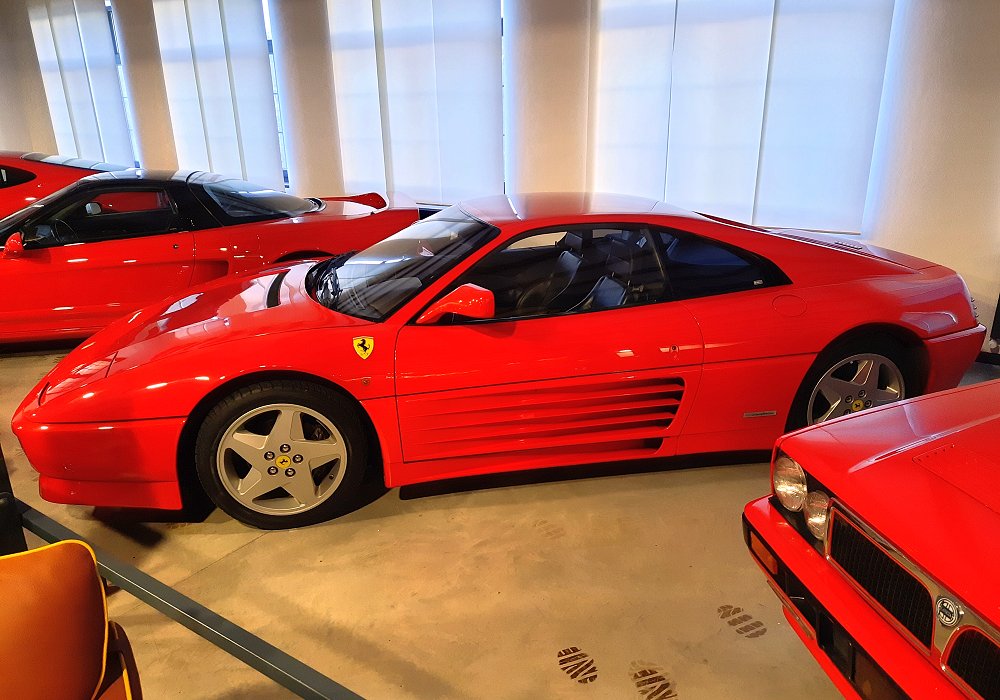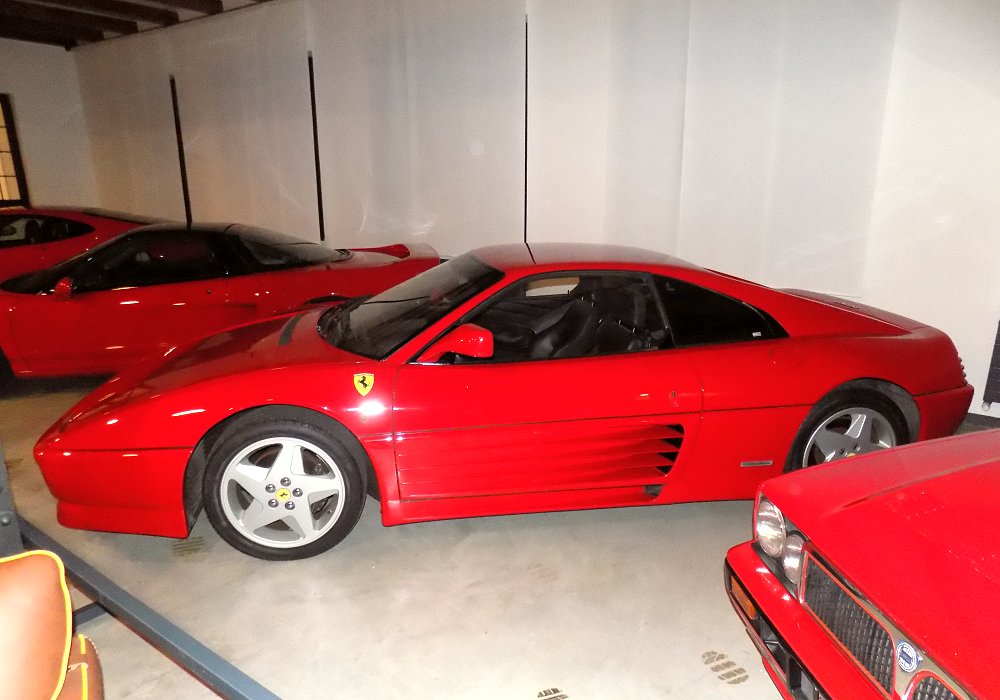Description
The Ferrari 348 GTB was introduced in 1993 as part of the final and most refined generation of the 348 series, replacing the earlier 348 TB coupe. It retained the same basic mid-engined, rear-wheel-drive layout but benefited from a series of upgrades that improved performance, handling, and overall refinement. The “GTB” designation stood for “Gran Turismo Berlinetta,” denoting the fixed-roof coupe body style.
The car was powered by a 3,405 cc 90-degree V8 with four valves per cylinder, producing around 320 horsepower in European specification thanks to revised engine mapping and other refinements introduced late in the 348’s production run. This was paired with a transverse-mounted five-speed manual gearbox connected to a longitudinally mounted engine — the hallmark “T” arrangement introduced with the 348 series. Performance improved over earlier models, with 0 to 100 km/h times dropping to about 5.4 seconds and a top speed of around 275 km/h.
Pininfarina’s design for the GTB preserved the sharp, aggressive look of the 348, with its signature Testarossa-inspired side strakes, integrated bumpers, and wide stance. Subtle changes in trim and detailing, along with updated alloy wheels, gave the GTB a slightly more contemporary appearance. The chassis received suspension tuning improvements and a wider rear track, which, combined with upgraded brakes, made the car more stable and predictable at the limit compared to early 348s.
Inside, the GTB featured the same low-slung, driver-focused cockpit as other 348s, with leather upholstery, Ferrari’s classic open-gated shifter, and improved ergonomics over the earlier TB. It was more comfortable on long drives yet retained the raw, mechanical engagement that defined Ferrari’s pre-electronic driver aid era.
The 348 GTB was produced in relatively small numbers, with around 252 units built between 1993 and 1994, making it one of the rarer variants in the series. Today, it is sought after by collectors and enthusiasts for its combination of analog driving purity, improved handling, and the exclusivity of low production.
If you want, I can also give you the history of its open-top counterpart, the Ferrari 348 GTS, which was launched alongside it.


